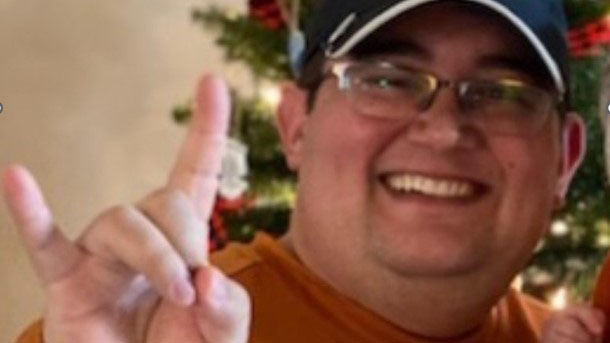- Diseases
- Acoustic Neuroma (14)
- Adrenal Gland Tumor (24)
- Anal Cancer (66)
- Anemia (2)
- Appendix Cancer (16)
- Bile Duct Cancer (28)
- Bladder Cancer (68)
- Brain Metastases (28)
- Brain Tumor (228)
- Breast Cancer (716)
- Breast Implant-Associated Anaplastic Large Cell Lymphoma (2)
- Cancer of Unknown Primary (4)
- Carcinoid Tumor (8)
- Cervical Cancer (154)
- Colon Cancer (164)
- Colorectal Cancer (110)
- Endocrine Tumor (4)
- Esophageal Cancer (42)
- Eye Cancer (36)
- Fallopian Tube Cancer (6)
- Germ Cell Tumor (4)
- Gestational Trophoblastic Disease (2)
- Head and Neck Cancer (6)
- Kidney Cancer (124)
- Leukemia (344)
- Liver Cancer (50)
- Lung Cancer (288)
- Lymphoma (284)
- Mesothelioma (14)
- Metastasis (30)
- Multiple Myeloma (98)
- Myelodysplastic Syndrome (60)
- Myeloproliferative Neoplasm (4)
- Neuroendocrine Tumors (16)
- Oral Cancer (100)
- Ovarian Cancer (170)
- Pancreatic Cancer (166)
- Parathyroid Disease (2)
- Penile Cancer (14)
- Pituitary Tumor (6)
- Prostate Cancer (144)
- Rectal Cancer (58)
- Renal Medullary Carcinoma (6)
- Salivary Gland Cancer (14)
- Sarcoma (236)
- Skin Cancer (294)
- Skull Base Tumors (56)
- Spinal Tumor (12)
- Stomach Cancer (60)
- Testicular Cancer (28)
- Throat Cancer (90)
- Thymoma (6)
- Thyroid Cancer (98)
- Tonsil Cancer (30)
- Uterine Cancer (78)
- Vaginal Cancer (14)
- Vulvar Cancer (18)
- Cancer Topic
- Adolescent and Young Adult Cancer Issues (20)
- Advance Care Planning (10)
- Biostatistics (2)
- Blood Donation (18)
- Bone Health (8)
- COVID-19 (362)
- Cancer Recurrence (120)
- Childhood Cancer Issues (120)
- Clinical Trials (624)
- Complementary Integrative Medicine (24)
- Cytogenetics (2)
- DNA Methylation (4)
- Diagnosis (230)
- Epigenetics (6)
- Fertility (62)
- Follow-up Guidelines (2)
- Health Disparities (14)
- Hereditary Cancer Syndromes (122)
- Immunology (18)
- Li-Fraumeni Syndrome (8)
- Mental Health (118)
- Molecular Diagnostics (8)
- Pain Management (62)
- Palliative Care (8)
- Pathology (10)
- Physical Therapy (18)
- Pregnancy (18)
- Prevention (892)
- Research (390)
- Second Opinion (74)
- Sexuality (16)
- Side Effects (602)
- Sleep Disorders (10)
- Stem Cell Transplantation Cellular Therapy (216)
- Support (404)
- Survivorship (322)
- Symptoms (184)
- Treatment (1770)
AML survivor celebrates at great heights
3 minute read | Published August 25, 2016
Medically Reviewed | Last reviewed by an MD Anderson Cancer Center medical professional on August 25, 2016
Lea White is a survivor in every sense of the word. The U.S. Marines veteran left home at age 16 and developed a stubborn determination to overcome adversity along the way.
She’d just gotten a divorce, moved to California, suffered the loss of two pets and was drowning in work when life dealt her another blow: an acute myelogenous leukemia (AML) diagnosis in April 2004.
“I’ve always been a survivor, and so this was just another one of those things,” she says. “My philosophy was to take it one test at a time, and not to read up on it and let the statistics scare me.”
Lea underwent several rounds of chemotherapy before receiving an autologous stem cell transplant using her own healthy stem cells that September.
That briefly put her AML into remission.
An AML recurrence
But in 2005, a month after Lea had moved to Beeville, Texas, a repeat bone marrow biopsy showed atypical myeoid blast cells. This made her doctors suspicious that she had what they called “minimal residual disease.” They said it was still too early to treat with chemotherapy.
But that changed five months later. In March 2006, Lea went to get a blood test after experiencing what she thought was a stomach flu. “Before I even got back to my office, the hospital called for me to come back for a retest,” she recalls. The doctors said her platelet counts were off.
“I immediately contacted MD Anderson, and they told me I needed to be in their emergency room that day,” Lea says.
She checked into the hospital that night.
Lea’s AML treatment at MD Anderson
Lea’s doctor recommended she undergo a second stem cell transplant. He also suggested she enroll in a clinical trial in which she’d receive more chemotherapy, even if her second stem cell transplant was successful. The decision was an easy one for Lea.
“‘If I gotta go out, I may as well go out helping someone else,’” she recalls telling her brother, who’d accompanied her to the doctor’s appointment.
In July 2006, Lea received a second stem cell transplant, this time using stem cells from an anonymous donor. Afterwards, she underwent chemotherapy.
Her AML has been in remission ever since then.
A reason to celebrate
Lea just celebrated her 10-year anniversary of showing no evidence of disease. To mark the occasion, she went skydiving in Belen, New Mexico. Now, she’s preparing to crew a hot air balloon for the fourth time.
For anyone who knows her, that’s a huge deal.
“Before leukemia, I was debilitatingly afraid of heights -- so much so that I was driving down Interstate 5 in California and found out that I had to cross the Coronado Bridge, and I had to pull my car over and let my passenger drive us over the bridge,” she says. “I got over my fear of heights after cancer. I went up in a hot air balloon the first time and I said, ‘Wow, I’d rather croak falling out of this hot air balloon than I would have leukemia.’”
Nothing is impossible
Lea thinks her healthy lifestyle played a part in her successful AML treatment, but she credits MD Anderson with saving her life.
“If you want to live, find your way to MD Anderson,” she says. “If you want half a chance, especially if it’s something complex, MD Anderson is the only place to be.”
As she tells others facing cancer, it’s important to celebrate every milestone – and to look for the positive in your situation.
“Take it one test at a time,” she says. “You can get through this. You can do it. Nothing is impossible.”
Related Cancerwise Stories

Take it one test at a time.
Lea White
Survivor





